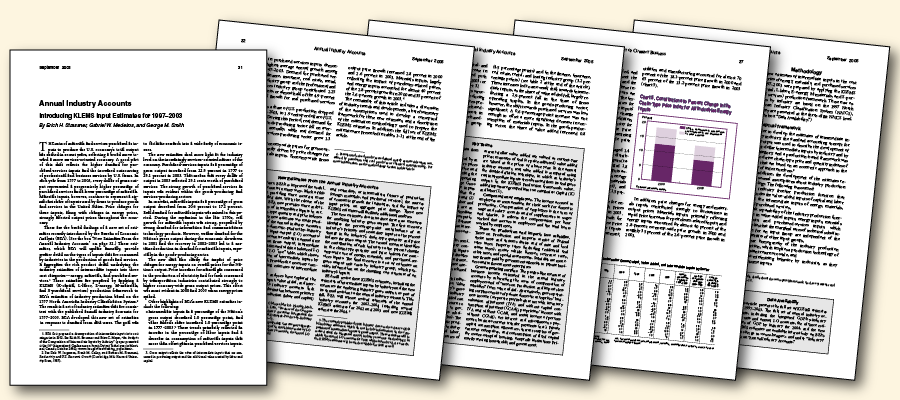The Introduction of KLEMS Estimates
The role of services in the U.S. economy has grown significantly for many decades. As the country has become more affluent, consumer demand for services, such as in the travel, recreation, educational, legal, financial, and technological service industries, has skyrocketed. Businesses have increasingly outsourced services, for instance, for marketing, accounting, human resources, and management, to name a few. New technologies have made many opportunities for individuals and contractors to provide in-demand services. All in all, the proportion of U.S. output attributed to services has increased at the expense of the manufacturing sector.
The Bureau of Economic Analysis (BEA) has long recognized this shift and accordingly has sought ways to capture it. Users of BEA data were also interested in this subject and asked BEA to develop new estimates to facilitate their economic research. As a result, in 2005, BEA published new estimates of U.S. economic growth by industry, reflecting the more services-oriented economy. This was accomplished by using a KLEMS (K-capital, L-labor, E-energy, M-materials, and S-purchased services) production framework.
The new KLEMS estimates were made possible by integrating the annual industry accounts, which consist of the Gross Domestic Product by Industry Accounts and the Input-Output Accounts, providing more analytically useful aggregations of intermediate inputs in current dollars and in chain-type quantity and price indexes. The results of this initiative were introduced in the September 2005 issue of the Survey of Current Business. The article, “Annual Industry Accounts: Introducing KLEMS Input Estimates for 1997–2003,” is presented in this centennial issue. For the most current statistics on economic growth by industry, please see the article “Integrated BEA/BLS Industry-Level Production Account and the Sources of U.S. Economic Growth: New Statistics for 2019 and Updated Statistics for 1987–2018, Including Extended Capital Detail,” also in this month’s issue.
